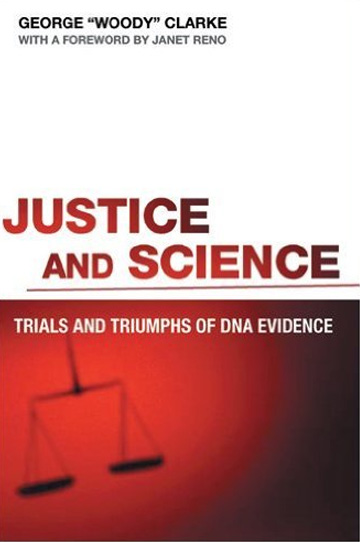
Judge George Clarke Extols DNA Data
February 29, 2008 | San Francisco Chronicle
Because the law is fundamentally a human enterprise, there are no guarantees and no silver bullets. Solid witnesses fall apart in front of the jury; spitting-mean judges unexpectedly rule for the plaintiff while grandmotherly ones rule for the defendant; the opposing side gets away with unconscionable shenanigans; the guilty go free while the innocent are sent to prison.
DNA evidence is no panacea, but in the human circus called the law, it comes close, especially in preventing the latter two outcomes. After less than 20 years of use in American courts, DNA testing – which can link an individual and a sample to a statistical certainty – has become a remarkable constant. Criminal defendants tied to a crime scene through hair, blood, semen or saliva can no longer mount a colorable attack on the science of DNA, so they must look for ways around it. In sexual assault cases, they contend that the victim consented; in other cases, the defendant says he was a bit player in a big operation or that the police failed to protect the evidence against contamination in storage.
The use of these tactics in court can be preposterous or it can be highly successful. In “Justice and Science: Trials and Triumphs of DNA Evidence,” George Clarke, a state court judge in San Diego who used to be a prosecutor specializing in DNA evidence, recounts a case in which a man was convicted of breaking into a woman’s home and raping her. Police photographs of the victim that were shown to the jury depicted vicious scars and bruises around her face. When semen testing showed that the defendant had indeed had sexual contact with her, he stopped denying everything and instead claimed that it had been consensual sex. She liked it rough, he told the jury. They would have been crazy to buy it.
But contending that police custodians have failed to prevent the contamination of DNA evidence can create a reasonable doubt in a juror’s mind. Those with the stomach or inclination to revisit such things will recall that O.J. Simpson’s criminal defense lawyer, Johnnie Cochran, repeatedly called the Los Angeles Police Department‘s crime lab a “cesspool of contamination.” The DNA evidence implicating Simpson in the murder of Nicole Brown Simpson and Ron Goldman was substantial: Drops of Simpson’s blood were recovered near Brown and Goldman’s bodies, while Brown and Goldman’s blood was found in Simpson’s car, on his socks and on the notorious glove that didn’t fit. But racial politics and the storage of evidence eventually became the central issues of the case, pushing the DNA issue from the foreground.
Most criminal defendants tied to a victim through DNA testing don’t fare as well as Simpson did. For one thing, they can’t afford the glitzy lawyers. The heart of “Justice and Science” is therefore a series of anecdotal reports of prosecutorial successes in early DNA cases (many of them Clarke’s), as defense attorneys sought to discredit the underlying science and sophisticated criminologists moved beyond the basic blood typing of the 1970s to the highly accurate testing in use today. The overall picture is the emergence of a satisfying and reliable tool to catch violent offenders who otherwise might get away.
Equally important is the use of DNA evidence to exonerate the wrongfully convicted. More than 200 people have been released from prison since 1989 through the efforts of groups such as the Innocence Project at Yeshiva University and the Center on Wrongful Convictions at Northwestern University. Clarke recounts the remarkable decision of his own district attorney in San Diego to initiate innocence testing of hundreds of violent offenders; prosecutors, after all, are usually the ones fighting to keep convictions final.
A hot topic in this area, and one Clarke could have explored further, is the question of compensation for exonerated prisoners who have mistakenly spent time behind bars. The majority of states offer no compensation at all, leading ex-prisoners to launch costly civil rights lawsuits against their arresting officers in an effort to be made whole. (The city of Chicago just paid a whopping $20 million settlement to four such men.) And those states that do provide compensation to the wrongfully imprisoned usually offer an insulting pittance: California, for instance, values a day in prison for a wrongfully convicted man at $100, while Wisconsin pays no more than $5,000 per year. These rates enormously undervalue the devastation of a wrongful prison term in terms of not only lost life and opportunities but also earning power upon release.
Clarke’s account of the rise of DNA evidence is engaging and well paced, and the author comes across as likable and genuinely humble (“I was surprised at how tall she was,” he says about meeting then-Attorney General Janet Reno) – a rarity in a book of war stories. Too bad about that Simpson verdict, though.